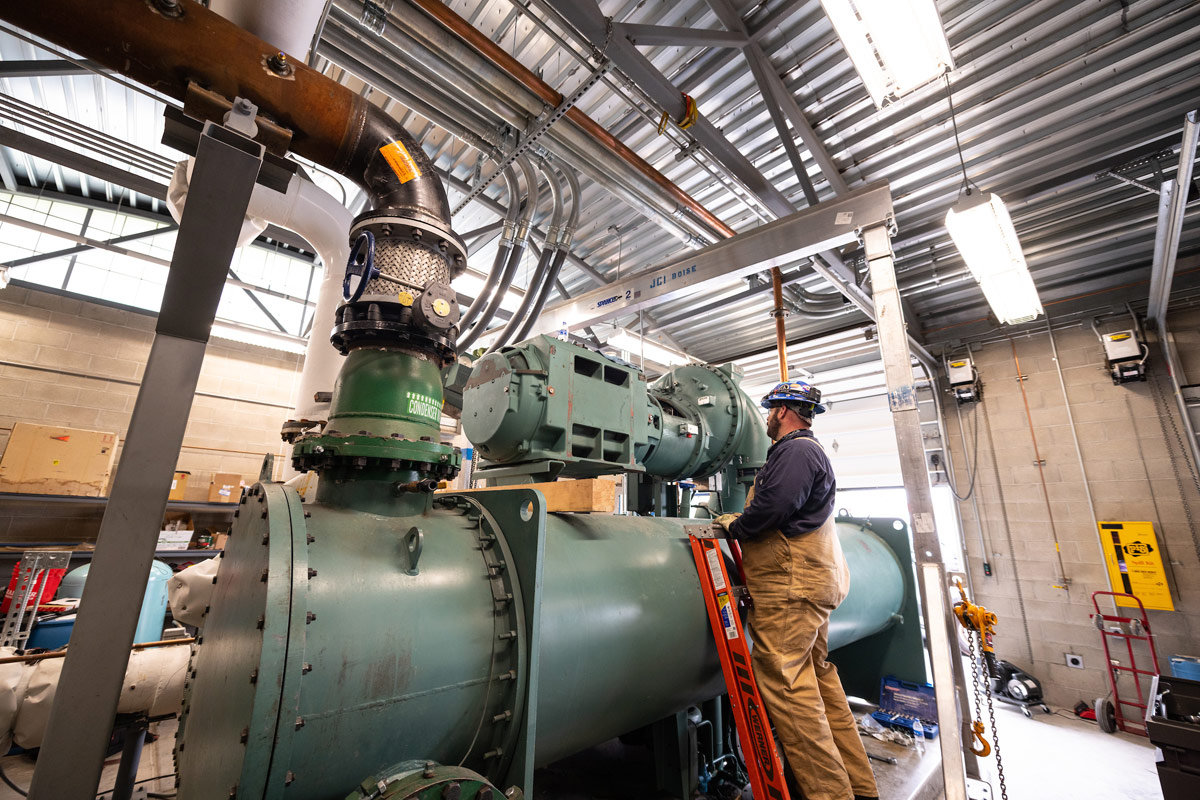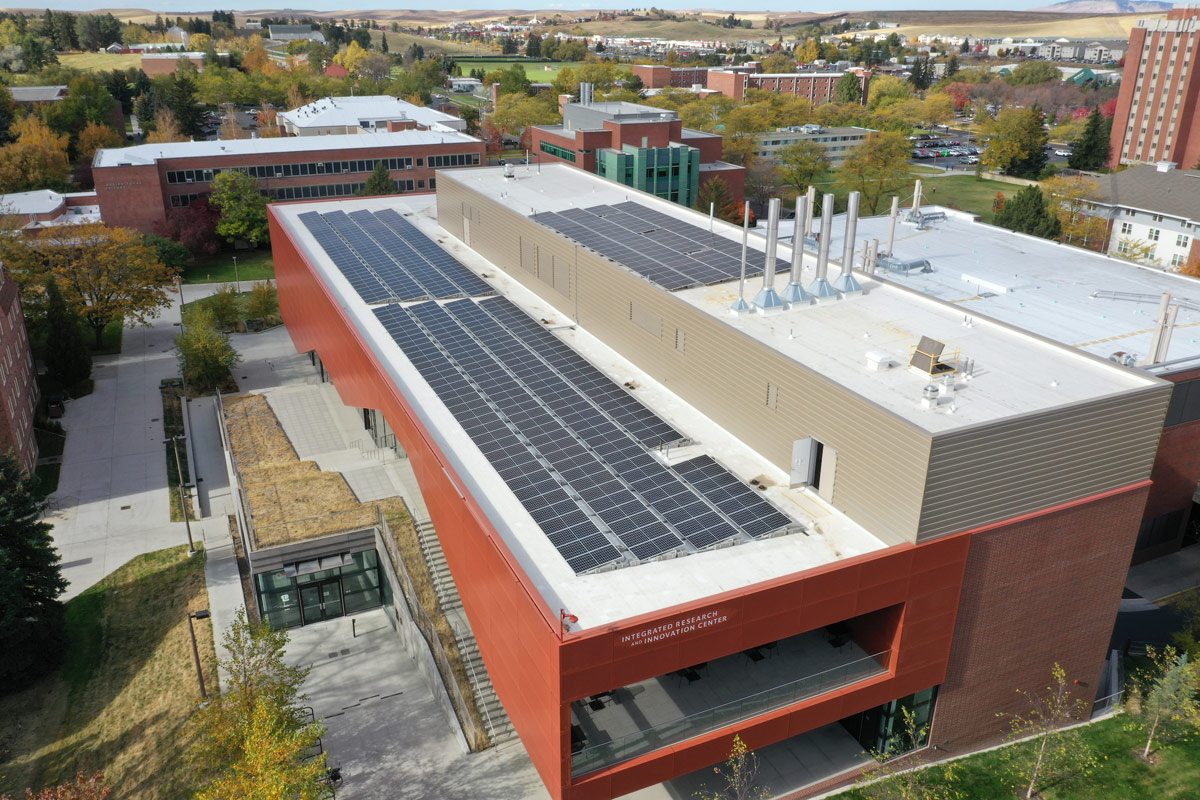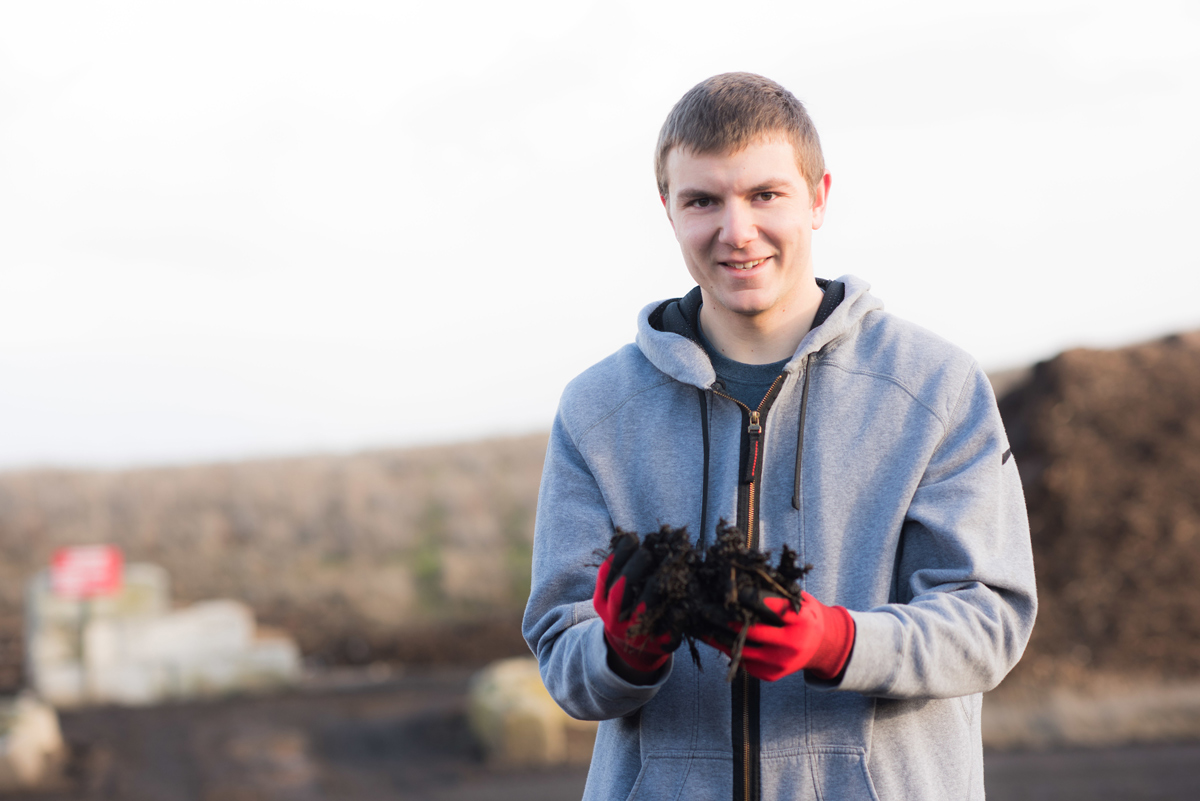Energy Independence Through Engineering Innovation
Three Student-Led Projects, Three Ways the Moscow Campus Saves in Heat and Energy Costs
1: The Steam Team
The University of Idaho steam plant produces 250 million pounds of steam each year. Hold that steam all at once, and it would weigh more than the largest aircraft carrier.
All that steam travels through an underground network of pipes all day, every day, providing heat and warm water to core buildings on the Moscow campus.
“This is a giant mass of energy, and we’re constantly looking for new ways to remove inefficiencies and streamline its generation,” said Scott Smith, manager of the steam plant. “That’s why we involve students in the research and decision-making process. We discovered just how much we could accomplish using their insight and abilities.”
Lance Funke ’18 is an energy project developer for national building contractor McKinstry.
Funke realized his interest in sustainable building practices while working on a student-led feasibility study to capitalize on lost energy at the steam plant, using a new compact steam turbine about the size of a refrigerator.
“Steam turbines have been around as long as electricity,” said Funke. “But it wasn’t until recently that these microturbines became feasible and efficient for industrial operations at a smaller scale, like at the steam plant.”
The team worked with NLine Energy President Nathan Turner to assess the feasibility of using the Oregon-based company’s MicroSteam Turbines (MSTs), the only microturbines on the market able to harness what was previously considered wasted energy.
At the steam plant, steam is stored in a high-pressure chamber. Pressure reducing valves adjust steam pressure before it can be used across campus. This lowering of pressure from supply to distribution is a loss of energy. NLine’s innovative MST can be used to reduce pressure, contain the energy that would otherwise be lost and use it to generate twice the amount of electricity compared to a traditional turbine.
Funke and his team, electrical engineering graduates Chris Hoene, Jason Lundgren and Ningye Zhou, found that three turbines have higher output during peak steam production periods and would recoup installation costs faster — in less than six years — with nearly twice as much energy gained over a 20-year period.
Turbine installation will begin in June. Once these microturbines are completely installed, they will offset all of the steam plant’s electrical demand, making the facility carbon negative.

2: Solar-Ready
The Integrated Research and Innovation Center (IRIC), one of the newest buildings on campus, is home to a recent 10,000-square-foot energy-focused upgrade — 393 solar panels were recently installed on its roof.
With energy costs increasing, the group of solar panels, or solar array, is expected to save the university about $19,000 the first year, with increases annually. The array will meet 15% of the building’s annual demand and produce nearly all of IRIC’s energy needs over the summer months.
Seventy-three percent of U of I students indicated they would favor a student fee increase to install a solar array, according to a U of I Sustainability Center study conducted in 2018. That information, combined with an extensive grassroots funding campaign spearheaded by Sustainability Center Director Jeannie Matheison, made the array possible.
A lot of students have a passion for this. This isn’t just something administrators want, it’s something we’ve seen our students be vocal about time and time again. Sustainability Center Director Jeannie Matheison
“A lot of students have a passion for this,” Matheison said. “This isn’t just something administrators want, it’s something we’ve seen our students be vocal about time and time again.”
Electrical engineering alumnus Kennedy Caisley ’19 led a site assessment of 15 campus buildings to identify the best location for array installation.
“Many things determine the effectiveness of a solar array: the angle of the sun’s rays, each panel’s height off the ground, the shade it encounters throughout the day,” Caisley said. Factors also include roof accessibility for installation and maintenance.
The IRIC’s LEED Gold certification for energy efficiency and easy roof access made it a top candidate.
“We not only have this array to further offset energy costs, but we have a tangible piece of equipment students can easily access and learn from,” said Marc Compton ’16, ’18, steam plant mechanical engineer.
Compton oversaw the solar array install.
“The next step is to get students thinking about how we can take this new energy influx and store it for emergency use,” he said.

3: Enter: The Smart Grid
A major power outage on the Moscow campus is about more than just the lights going out.
Not only would a major outage disrupt education, it could also destroy years of research in labs across campus.
“We take power for granted,” said electrical engineering alumnus Kenny Sheffler ’19. “The lights don’t go out very often, but when they do, a large research institution like U of I stands to lose a lot of money.”
Sheffler was part of a student team that studied how additional energy produced by infrastructure like the microturbine project could be stored for use during a blackout.
Sheffler and 2019 electrical engineering graduates Simeon Drapeau, Mohammed Subahe and Lingchao Sun looked at taking the remaining electricity created by the new microturbines and transferring that among major buildings on campus.
“The ultimate goal is to build up enough generation sources within campus that if there is a power failure, we can isolate the university and feed buildings based off our own generation,” Sheffler said.

By simulating multiple grid configurations using relays from Schweitzer Engineering Laboratories (SEL), the team replicated what a power failure might look like on campus and how to design a microgrid to provide the best response.
“My experience was invaluable,” said Sheffler, now a power system consultant for SEL in Denver, Colorado. “I presented on this microgrid project during my SEL interview. It was like a stepping stone, to get to work on a project before getting paid to do it.”
Article by Alexiss Turner, College of Engineering.
Photography by University of Idaho Creative Services.
Published in the Spring 2021 issue of Here We Have Idaho.









